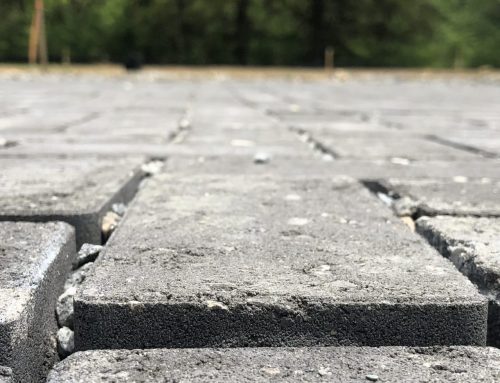When considering the question of using native vs non-native plants in bioretention and other stormwater management practices, I find myself struggling a bit. First off, I am not one to militantly state that “native plants should ALWAYS be used in a bioretention facility.” I think my bigger struggle with this question is that it seems very reductionist and perhaps instead, we should be asking ourselves, “How can we incorporate a more systems-based approach into our stormwater designs?”
With stormwater management practices in urban and suburban environments, one of the primary goals is to mimic pre-development hydrology. Using native plants facilitates mimicry of pre-development biology as well, yes? Why not take this even further and consider, as Cadenasso and Pikett (2008) have, the stormwater management practice within the full context of the human ecosystem concept that includes the social setting, physical and built environment. If we consider that we are designing an ecosystem that is nested within other ecosystems (parcel, neighborhood, watershed, city), then our practices will be much more sustainable and resilient and can support biodiversity, mitigate climate change and support ecological literacy.
Biodiversity is a key reason for utilizing native plants in engineered systems. Engineers have an opportunity with stormwater management practices to develop their potential as growers and restorers of biodiversity and to help repair ecological systems. In urban environments, local biodiversity can fulfill services from creating corridors to nonurban habitat to connecting people with nature through environmental education. Heterogeneity is the key to resilience in natural ecosystems.
Native plants also provide the important ecosystem service of pollination. Native plants will attract more native pollinators and can serve as larval host plants for some species of pollinators. Native pollinators (bats, hummingbirds, bees, butterflies, etc.) are two to three times better pollinators than honeybees and not as prone to the colony collapse disorder that has decimated honeybee populations. Greg is a beekeeper, so I know he must appreciate this particular argument for native plants.
We may even want to consider the use of native fungi in bioretention systems or mycofiltration, to capture and degrade environmental pollutants. Fungi speed up habitat recovery and soil building with their thread-like mycelium structure that consumes toxins. Fungi not only filter, but also consume and break down harmful toxins and microorganisms into harmless sugars. Intentionally incorporating fungi into stormwater management design is truly taking an innovative and holistic approach to restoration.
We will want consider a more holistic approach in design of stormwater management facilities, especially if we are looking for public and elected official support for their implementation. We need to consider the multiple benefits that our stormwater management practices can provide to potential partners, community members, municipal officials, and local environmental organizations. These are opportunities to create beautiful and meaningful projects that resonate with the public. Using native plants in restoration is great…integrating a systems-based approach is even better.
 Lori A. Lilly is an independent consultant with 13 years of experience in the environmental field. Lori has a B.S. in Natural Resource Management from Rutgers University and an M.S. in Marine Estuarine and Environmental Science from the University of Maryland Eastern Shore. She directed a non-profit organization and led grassroots watershed and salmon habitat restoration projects in northwest Oregon from 2006-2009. From 2009-2014, Lori worked for the Center for Watershed Protection (CWP) as a Watershed Ecologist / Planner where she specialized in Illicit Discharge Detection and Elimination (IDDE). At CWP, Lori led primary research projects in IDDE; completed numerous IDDE workshops and presentations throughout the country; developed IDDE guidance and program materials and served on the Chesapeake Bay Program’s IDDE Expert Panel. More information about Lori and her current project work can be found on her company’s web-site: http://www.lorialilly.com/.
Lori A. Lilly is an independent consultant with 13 years of experience in the environmental field. Lori has a B.S. in Natural Resource Management from Rutgers University and an M.S. in Marine Estuarine and Environmental Science from the University of Maryland Eastern Shore. She directed a non-profit organization and led grassroots watershed and salmon habitat restoration projects in northwest Oregon from 2006-2009. From 2009-2014, Lori worked for the Center for Watershed Protection (CWP) as a Watershed Ecologist / Planner where she specialized in Illicit Discharge Detection and Elimination (IDDE). At CWP, Lori led primary research projects in IDDE; completed numerous IDDE workshops and presentations throughout the country; developed IDDE guidance and program materials and served on the Chesapeake Bay Program’s IDDE Expert Panel. More information about Lori and her current project work can be found on her company’s web-site: http://www.lorialilly.com/.






